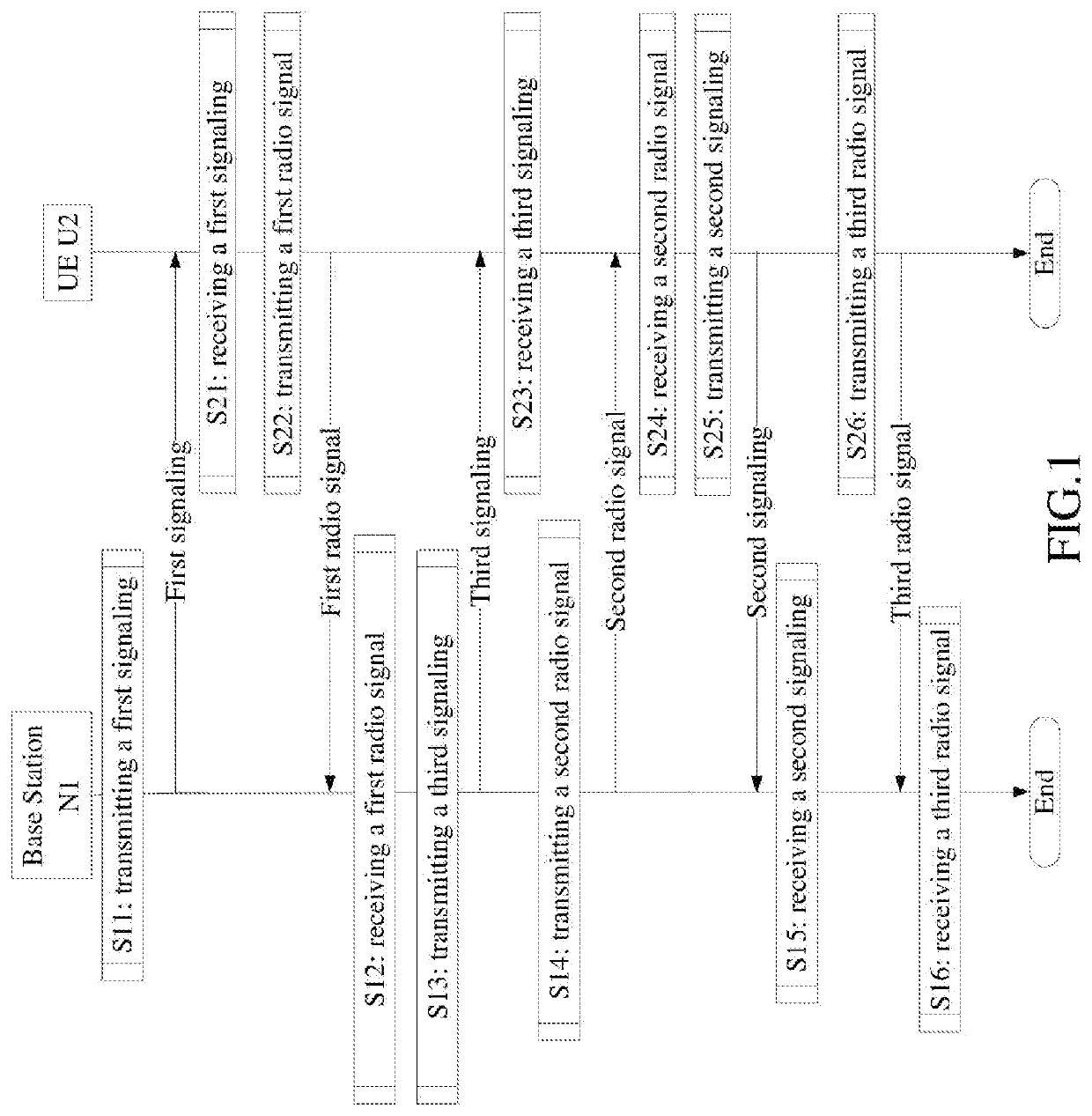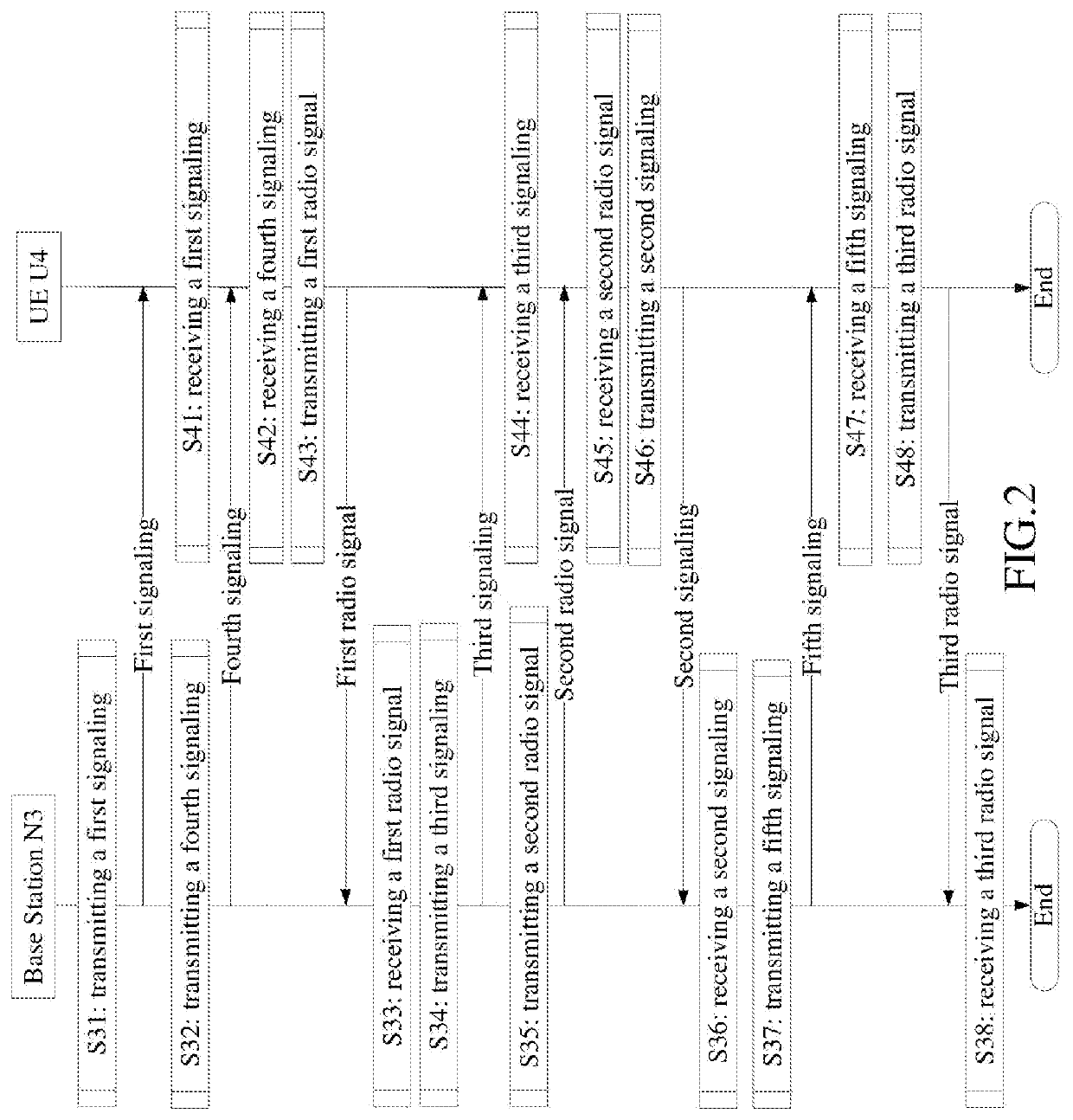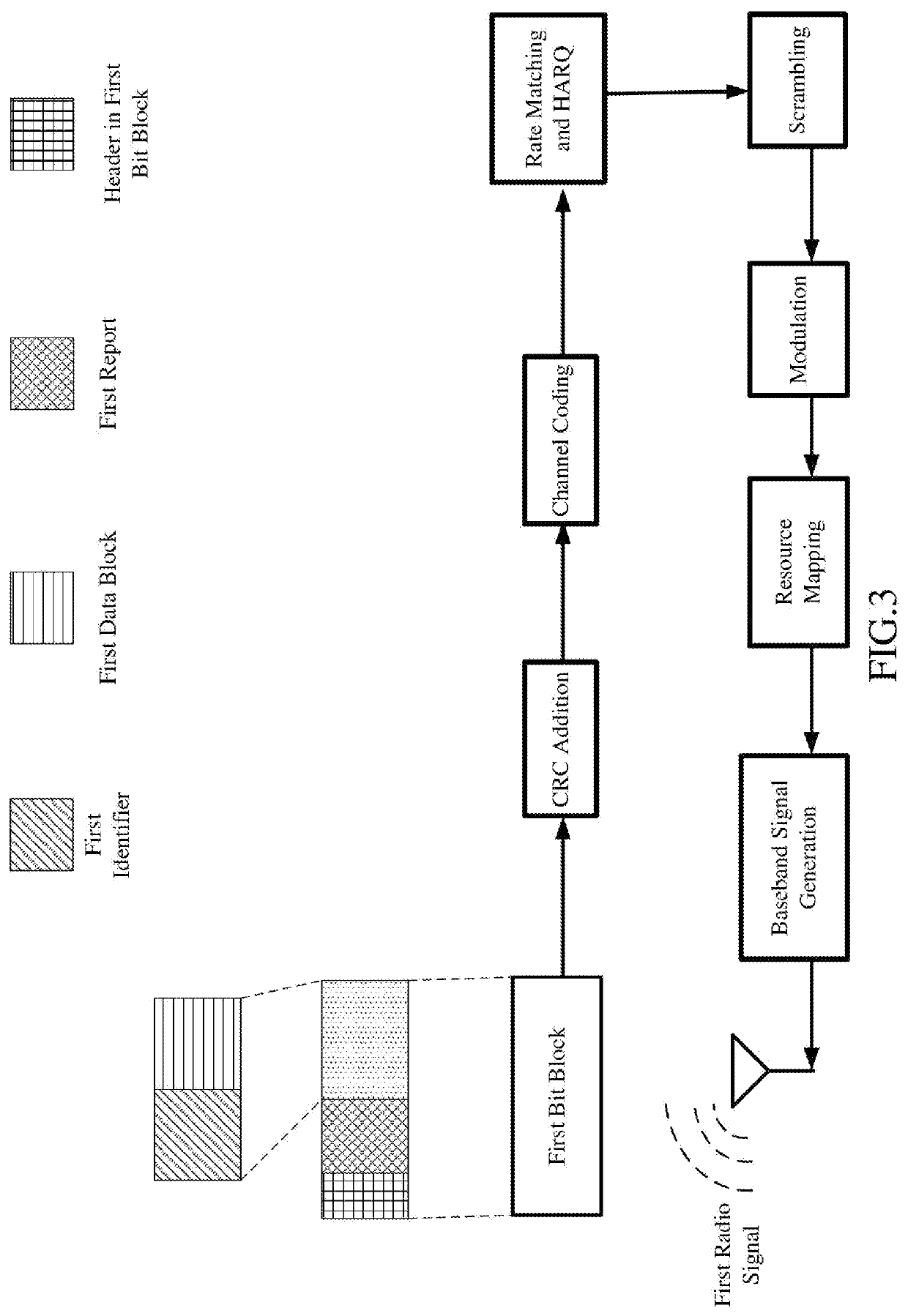Method and apparatus in user equipment and base station supporting random access
a random access and user equipment technology, applied in the direction of wireless communication, transmission path sub-channel allocation, high-level techniques, etc., can solve the problems of long wait, power consumption, and many unnecessary signaling overheads, so as to reduce the long wait, improve resource utilization, and reduce the power consumption of the ue
- Summary
- Abstract
- Description
- Claims
- Application Information
AI Technical Summary
Benefits of technology
Problems solved by technology
Method used
Image
Examples
embodiment 1
[0187]Embodiment 1 illustrates an example of a flowchart of transmission of a radio signal according to one embodiment of the disclosure, as shown in FIG. 1. In FIG. 1, a base station N1 is a maintenance base station for a serving cell of a UE U2.
[0188]The base station N1 transmits a first signaling in S11, receives a first radio signal in S12, transmits a third signaling in S13, transmits a second radio signal in S14, receives a second signaling in S15, and receives a third radio signal in S16.
[0189]The UE U2 receives a first signaling in S21, transmits a first radio signal in S22, receives a third signaling in S23, receives a second radio signal in S24, transmits a second signaling in S25, and transmits a third radio signal in S26.
[0190]In Embodiment 1, a first bit block is used for generating the first radio signal, the first bit block includes a positive integer number of bits, the first bit block carries a first identifier and a first data block, the first bit block lacks a fie...
embodiment 2
[0211]Embodiment 2 illustrates an example of a flowchart of transmission of a radio signal according to one embodiment of the disclosure, as shown in FIG. 2. In FIG. 2, a base station N3 is a maintenance base station for a serving cell of a UE U4.
[0212]The base station N3 transmits a first signaling in S31, transmits a fourth signaling in S32, receives a first radio signal in S33, transmits a third signaling in S34, transmits a second radio signal in S35, receives a second signaling in S36, transmits a fifth signaling in S37, and receives a third radio signal in S38.
[0213]The UE U4 receives a first signaling in S41, receives a fourth signaling in S42, transmits a first radio signal in S43, receives a third signaling in S44, receives a second radio signal in S45, transmits a second signaling in S46, receives a fifth signaling in S47, and transmits a third radio signal in S48.
[0214]In Embodiment 2, a first bit block is used for generating the first radio signal, the first bit block in...
embodiment 3
[0225]Embodiment 3 illustrates an example of a diagram of a first bit block according to one embodiment of the disclosure, as shown in FIG. 3. In FIG. 3, a rectangle filled with slashes represents bits occupied by a first identifier, a rectangle filled with horizontal lines represents bits occupied by a first data block, a rectangle filled with cross lines represents bits occupied by a first report, and a rectangle filled with grid lines represents a header included in a first bit block, and each bold-line blank box represents one baseband processing function that a first bit block experiences to generate a first radio signal.
[0226]In Embodiment 3, a first bit block is used for generating the first radio signal, the first bit block includes a positive integer number of bits, the first bit block carries a first identifier and a first data block, the first bit block lacks a field used for indicating RRC connection request cause information, a field used for indicating RRC connection r...
PUM
 Login to View More
Login to View More Abstract
Description
Claims
Application Information
 Login to View More
Login to View More - R&D
- Intellectual Property
- Life Sciences
- Materials
- Tech Scout
- Unparalleled Data Quality
- Higher Quality Content
- 60% Fewer Hallucinations
Browse by: Latest US Patents, China's latest patents, Technical Efficacy Thesaurus, Application Domain, Technology Topic, Popular Technical Reports.
© 2025 PatSnap. All rights reserved.Legal|Privacy policy|Modern Slavery Act Transparency Statement|Sitemap|About US| Contact US: help@patsnap.com



